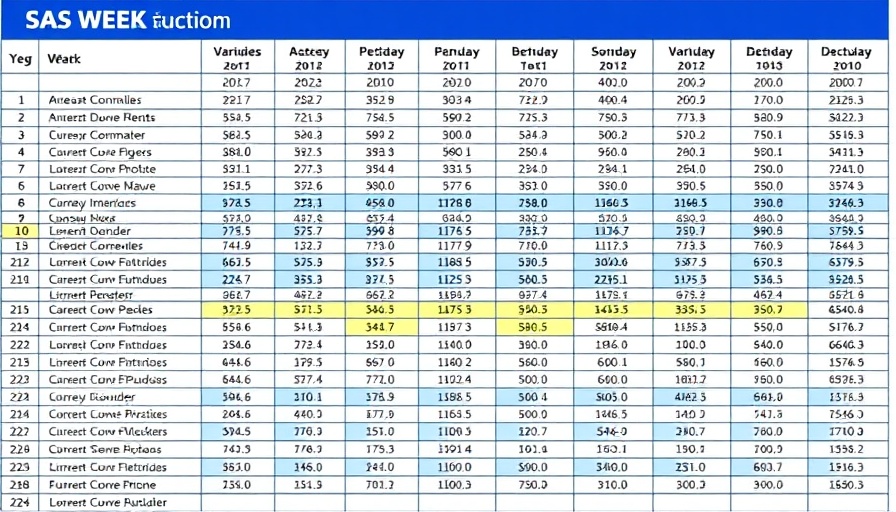
Understanding the WEEK Function in SAS
In the realm of statistical analysis and programming, managing time is paramount. One of the significant hurdles data analysts face is the way weeks are numbered within a year. The traditional notion of weeks often causes confusion, especially when the counting structure does not align with the calendar year. The WEEK function in SAS provides a solution to this complexity, allowing users to effectively track weeks throughout the year.
Why the WEEK Function Matters for Data Analysts
Data analysts often find themselves needing to visualize trends over periods—be it gas prices, sales figures, or web traffic over weeks. For instance, Rick Wicklin mentions a widely used visualization technique where weekly metrics are represented through heatmaps. Understanding how to manipulate time-based data with SAS's WEEK function not only increases efficiency but also enhances the accuracy of analyses. By utilizing the WEEK function, research databases can deliver insights about trends over time, forecast reports, and generate relevant statistical summaries.
The Mechanics of the WEEK Function
The WEEK function, as outlined, returns the week number for any given date, supporting various options to conform to international standards. To adopt the ISO standard, one can implement the function as follows:
week_of_year = week(date, 'V');This translates to understanding that weeks in the ISO calendar start on Monday and span until Sunday, and the function dynamically adjusts for leap years, making it both robust and flexible.
Real-World Implications and Applications
The implications of utilizing the WEEK function extend beyond mere convenience; they influence critical decision-making. Companies are increasingly turning to data modeling and analysis to inform marketing strategies and operational approaches. Knowledge of how to apply functions like WEEK can assist in effectively targeting audiences based on weekly trends. For example, businesses analyzing sales data from start to finish on a weekly basis can draw correlations that reveal consumer behavior patterns.
Future Trends and Opportunities in Data Analytics
As AI technology continues to permeate various sectors, the importance of mastering tools like the WEEK function becomes increasingly important. With the rise of AI learning paths, SAS programming may evolve further to incorporate machine learning and predictive analytics.
Leveraging the WEEK function effectively may turn out to be a vital part of ensuring that companies remain competitive in an ever-evolving landscape. Analysts equipped with the right technical skills can power the next generation of intelligent decision-making by understanding these fundamental time-related functions.
Potential Challenges Users Might Face
Despite the benefits, there are challenges associated with the correct application of the WEEK function. For instance, data scientists may misinterpret how the function calculates week numbers, leading to inaccuracies in reports. It is crucial for users to thoroughly understand not only the function itself but also the underlying ISO standards to avoid common pitfalls.
Conclusion: Embrace the Power of the WEEK Function
In conclusion, mastering the WEEK function in SAS is an investment in your data analysis skill set, particularly as the demand for data literacy increases in today’s AI-driven world. Understanding how to manage and manipulate time data can empower analysts to produce meaningful insights that drive organizational success. The landscape of AI learning is only just beginning to evolve; as tools become more advanced, so too must the skill sets of their users. Now is the time to enhance your knowledge of functions like WEEK and explore how they anchor the future of data analytics.
 Add Row
Add Row  Add
Add 




Write A Comment